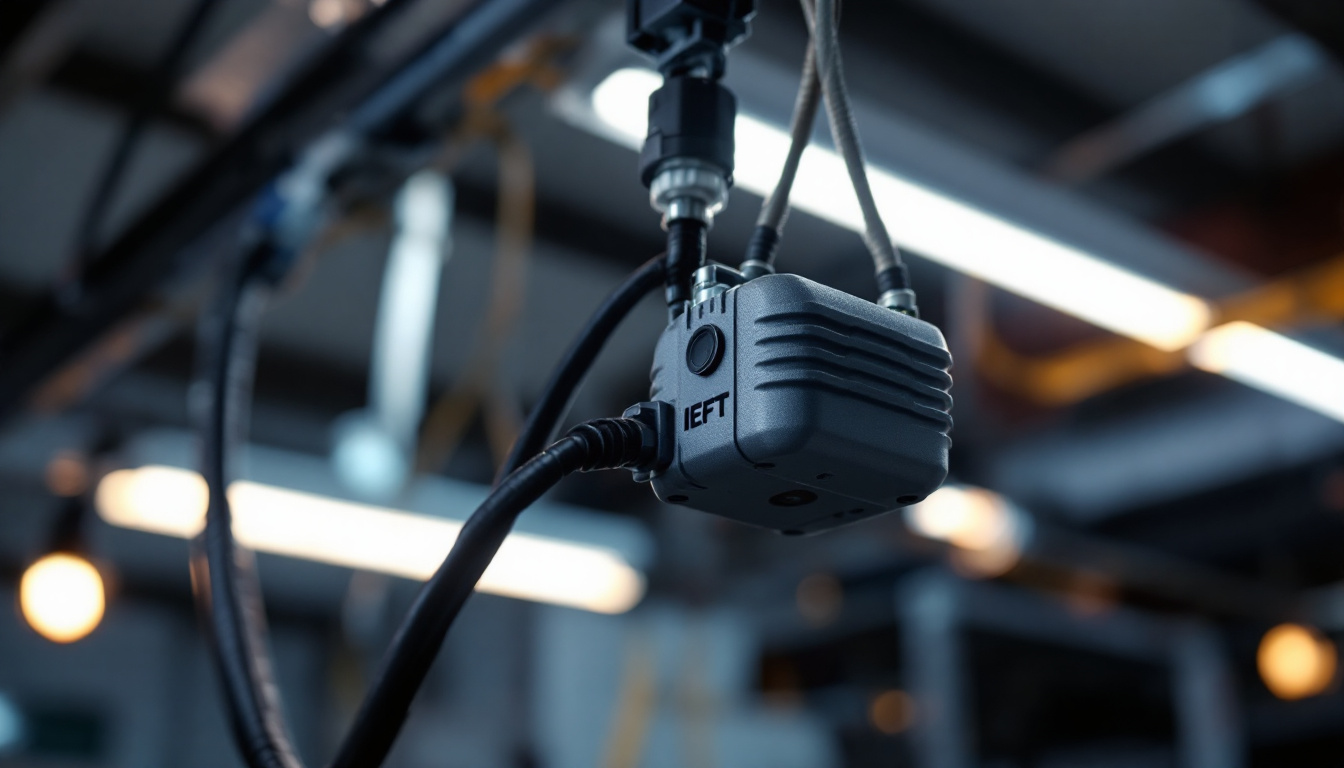
In the realm of lighting installations, understanding the components that contribute to safety and efficiency is crucial. Among these components, the ballast plays a significant role. This article delves into the function of a ballast, its importance in lighting systems, and how it enhances safety in various applications.
A ballast is an electrical device that regulates the current in a lighting system, particularly in fluorescent and HID (High-Intensity Discharge) lamps. Its primary function is to provide the necessary voltage to start the lamp and then limit the current flowing through it during operation. Without a ballast, lamps would draw excessive current, leading to overheating and potential failure.
There are two main types of ballasts: magnetic and electronic. Magnetic ballasts are the traditional option, utilizing electromagnetic coils to regulate current. While they are reliable, they tend to be bulkier and less energy-efficient compared to their electronic counterparts.
Electronic ballasts, on the other hand, use electronic circuitry to control the current. They are generally lighter, more compact, and offer improved energy efficiency. Additionally, electronic ballasts can provide better performance in terms of flicker reduction and dimming capabilities, making them a popular choice for modern lighting installations. The advancements in electronic ballasts have also led to the development of smart lighting systems that can be integrated with building management systems, allowing for automated control and energy savings.
The operation of a ballast can be broken down into two main phases: starting and running. During the starting phase, the ballast provides a high voltage to ignite the lamp. Once the lamp is lit, the ballast reduces the voltage to a lower level to maintain a steady current. This dual-functionality is essential for the longevity of the lamp and the overall safety of the lighting system.
In the running phase, the ballast continuously monitors and adjusts the current to prevent fluctuations that could lead to lamp failure. This regulation is crucial, especially in environments where lighting is critical for safety, such as in commercial buildings, warehouses, and outdoor spaces. Furthermore, the choice of ballast can significantly impact the overall performance of the lighting system, including energy consumption and maintenance costs. For instance, using high-quality electronic ballasts can reduce energy costs by up to 30% compared to traditional magnetic ballasts, making them a more sustainable option in the long run.
Moreover, the integration of ballasts with modern lighting technologies, such as LED systems, has opened up new avenues for energy efficiency and design flexibility. Many LED systems now come with built-in drivers that serve a similar function to traditional ballasts, allowing for even greater control over light output and energy usage. This evolution not only enhances the user experience but also contributes to a more sustainable approach to lighting in both residential and commercial applications. As the industry continues to innovate, the role of ballasts and their technology will remain pivotal in shaping the future of efficient lighting solutions.
Safety is paramount in any lighting installation, and ballasts play a pivotal role in ensuring that safety standards are met. By controlling the electrical current, ballasts help prevent overheating and reduce the risk of electrical fires. Furthermore, they contribute to the overall reliability of the lighting system, which is essential in preventing accidents and ensuring visibility.
One of the primary safety functions of a ballast is its ability to prevent overheating. When lamps operate without proper current regulation, they can become excessively hot, leading to potential hazards. Ballasts mitigate this risk by limiting the current flow, ensuring that the lamp operates within safe temperature ranges.
This is particularly important in enclosed fixtures or areas with limited ventilation, where heat buildup can be more pronounced. By maintaining optimal operating conditions, ballasts help extend the life of the lamp while enhancing safety. Additionally, many modern ballasts are equipped with thermal protection features that automatically shut down the system if temperatures exceed safe limits. This proactive approach not only protects the lighting fixtures but also safeguards the surrounding environment from fire risks associated with overheating.
electrical hazards are a significant concern in any lighting installation. Ballasts help reduce these risks by providing a controlled environment for the lamp to operate. They ensure that the electrical current remains stable, minimizing the chances of surges that could lead to short circuits or other electrical failures.
Moreover, ballasts are designed to withstand various electrical conditions, including voltage spikes. This resilience adds an extra layer of protection, not only for the lighting system but also for the surrounding infrastructure and personnel. In addition to their protective functions, some advanced ballasts incorporate smart technology that monitors electrical performance in real-time. These systems can alert users to potential issues before they escalate, allowing for timely maintenance and intervention. This capability is especially beneficial in commercial settings where lighting reliability is crucial for safety and productivity.
In addition to safety, ballasts also contribute to energy efficiency in lighting installations. With the increasing focus on sustainability and reducing energy consumption, the choice of ballast can significantly impact overall energy usage.
Electronic ballasts are known for their energy-saving capabilities. By providing a more efficient way to control the current, they reduce energy waste, resulting in lower electricity bills and a smaller carbon footprint. This efficiency is particularly beneficial in commercial settings, where lighting is often a major component of operational costs.
Moreover, electronic ballasts can enhance the performance of fluorescent lamps, allowing them to operate at higher efficiencies. This means that not only do they consume less energy, but they also produce more light output per watt, further improving the overall efficiency of the lighting system.
While the initial investment in electronic ballasts may be higher than that of magnetic ballasts, the long-term cost savings can be substantial. The increased energy efficiency translates to lower utility bills, while the extended lifespan of both the ballast and the lamp reduces replacement costs over time.
Additionally, many electronic ballasts come with features such as dimming capabilities, which can further enhance energy savings by allowing users to adjust lighting levels based on specific needs. This flexibility not only improves energy efficiency but also enhances the overall user experience.
Selecting the appropriate ballast for a lighting installation involves considering several factors. Understanding the specific requirements of the lighting system, as well as the environment in which it will be installed, is essential for making an informed decision.
One of the first considerations when choosing a ballast is its compatibility with the type of lamp being used. Different lamps require different types of ballasts, so it is crucial to ensure that the selected ballast matches the specifications of the lamp. For instance, fluorescent lamps typically require either an electronic or magnetic ballast, while HID lamps have their own unique requirements.
Using an incompatible ballast can lead to poor performance, reduced efficiency, and even damage to the lamp. Therefore, consulting manufacturer guidelines and specifications is vital when making a selection.
The environment in which the lighting system will be installed also plays a significant role in the choice of ballast. For example, areas with high humidity or extreme temperatures may require specialized ballasts designed to withstand these conditions. Additionally, outdoor installations may necessitate ballasts that are weatherproof or resistant to corrosion.
Understanding the specific environmental challenges can help ensure that the ballast selected will perform reliably and safely over time, minimizing the risk of failures that could compromise safety.
Proper installation and maintenance of ballasts are crucial for ensuring their longevity and effectiveness. Following best practices during installation can help mitigate potential issues and enhance the overall safety of the lighting system.
When installing a ballast, it is essential to follow the manufacturer’s instructions carefully. This includes ensuring that all electrical connections are secure and that the ballast is mounted correctly. Additionally, it is important to verify that the ballast is rated for the specific lamp and application being used.
Using the correct gauge of wire and ensuring proper grounding are also critical steps in the installation process. These practices help prevent electrical hazards and ensure that the ballast operates efficiently.
Regular maintenance of ballasts can help identify potential issues before they become significant problems. This includes checking for signs of wear, such as discoloration or unusual noises, and ensuring that all connections remain secure.
Additionally, periodic testing of the lighting system can help ensure that the ballast is functioning correctly. If any issues are detected, addressing them promptly can help maintain safety and efficiency in the lighting installation.
In summary, the ballast is a critical component in lighting installations that enhances safety, efficiency, and overall performance. Understanding its functions, types, and the role it plays in preventing hazards is essential for lighting contractors aiming to deliver high-quality installations.
By choosing the right ballast, adhering to best practices in installation and maintenance, and considering energy efficiency, contractors can ensure that their lighting systems not only meet safety standards but also contribute to long-term cost savings and sustainability.
As the lighting industry continues to evolve, staying informed about advancements in ballast technology and their implications for safety and efficiency will be crucial for success in the field.
Ready to elevate your lighting installations with the safest, most efficient ballasts on the market? Look no further than LumenWholesale, where we specialize in providing contractors with the highest quality, spec-grade lighting products at unbeatable wholesale prices. Say goodbye to inflated markups and hello to superior lighting solutions that meet the highest industry standards. With our hassle-free bulk buying and free shipping, you can trust that you’re getting premium lighting at the best value — without any hidden fees. Make your next project shine with the perfect blend of quality, affordability, and convenience at LumenWholesale.

Discover the essential insights lighting contractors need to know about LED mirrors.

Discover the benefits of using lawn lights solar technology for lighting contractors.

Discover where to buy ultraviolet lights and explore how these innovative tools enhance efficiency for lighting contractors.

Discover how Edison bulb solar lights are revolutionizing the lighting industry for contractors.